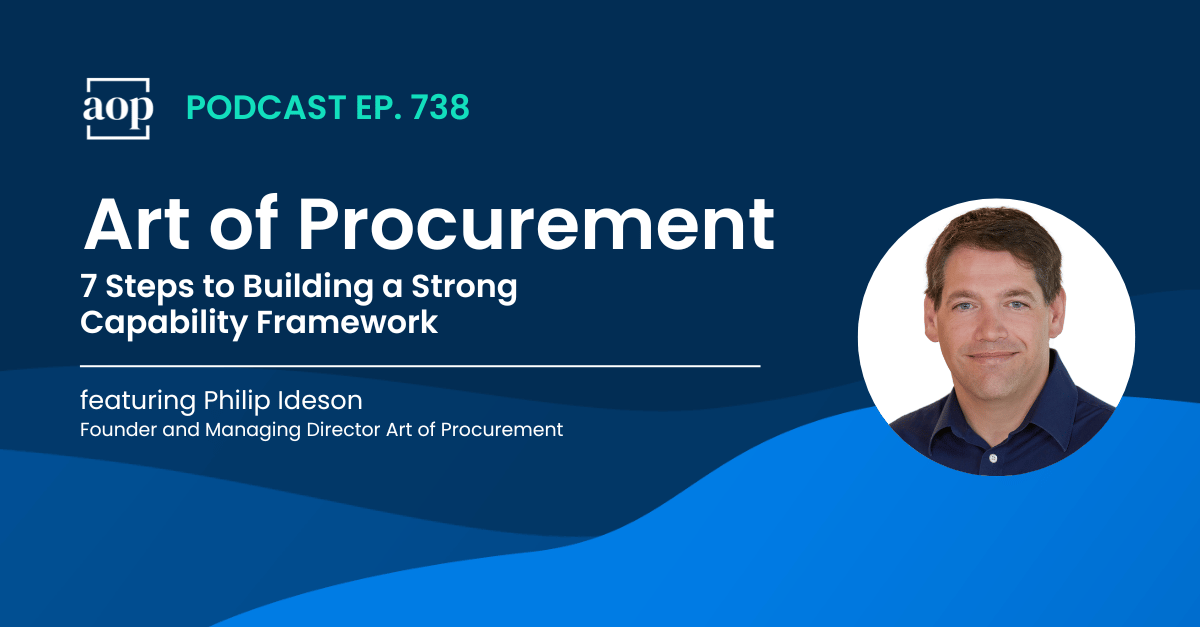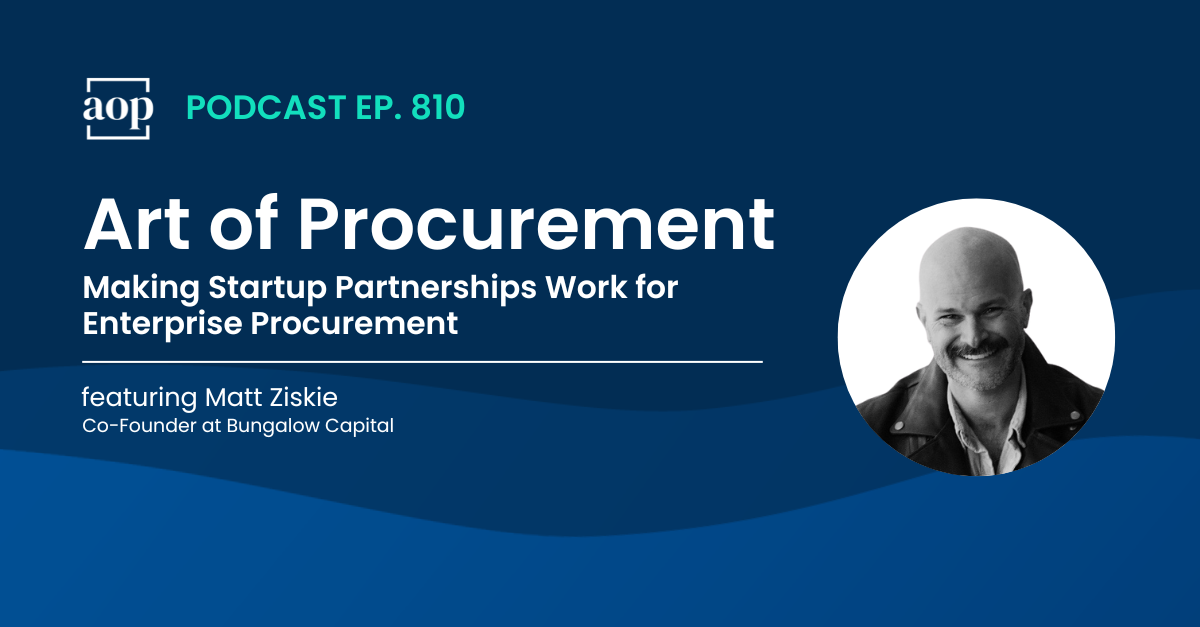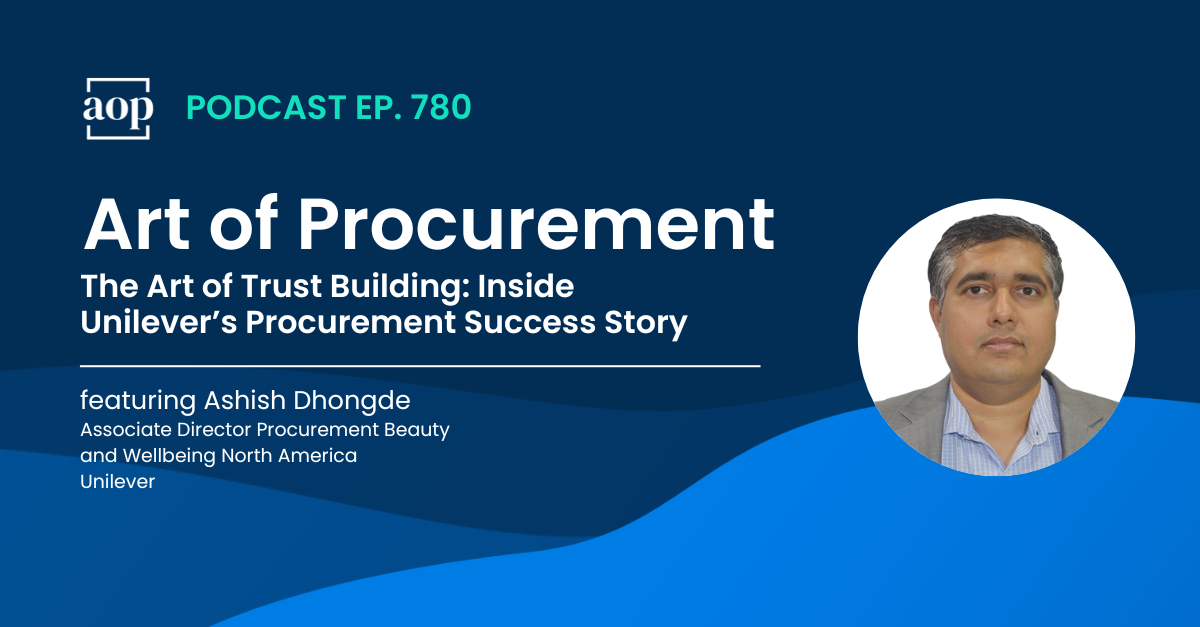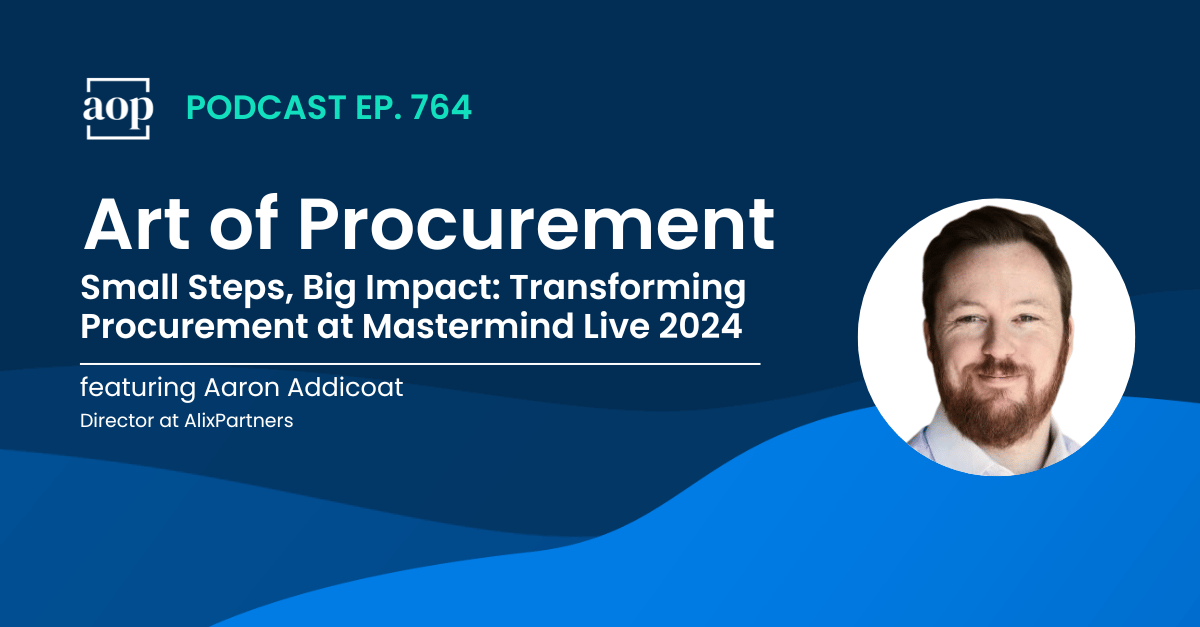
“Procurement teams face increasing pressure to demonstrate value and drive business outcomes, but sometimes there’s a disconnect between the skills that they have and the skills that they need to deliver at the highest level.” – Philip Ideson, Founder & Managing Director at Art of Procurement
Creating a robust capability framework is a critical part of successful team development, and yet so many organizations still don’t have one. It is essential to have a clear roadmap of the skills needed to drive value and a way to measure that against the skills they actually have in house.
In this AOP podcast episode, I address the importance of capability frameworks: how to know if your team needs one, and the steps to creating one, which will pave the way for long-term team impact and performance. Here are a few of the highlights from that episode, along with the 7 steps we use at AOP to create strong capability frameworks for our services clients.
What is a capability framework?
A capability framework is a structured way to define the skills, knowledge, and behaviors that are required for your team’s success. Think of it as a ‘blueprint’ that lays out what each role on your team needs in order to perform at their best. Creating a capability framework helps you to identify not only the skills and competencies that your team already has, but most importantly, those that need to be added or developed.
How do you know if your team needs a capability framework?
There are a few common indicators that highlight your team’s need for a capability framework. Struggling to meet expectations without a clear understanding of why; inconsistency across team members’ performance or skill levels; a lack of progression and development in individual team members; confusion about the skills needed to provide value to the business… All of these are strong indications that your team would benefit from a structured framework and the insights it provides about gaps and opportunities in your team’s capabilities.
The 7 steps to building a strong capability framework
If you’ve never created a capability framework before, the idea might seem overwhelming. By breaking it down into manageable steps, you can lay the foundation necessary to start identifying and then filling critical skills gaps across your team.
- Define purpose and scope: Before creating the framework, it’s important to clarify your goals and what you’re ultimately trying to achieve – both for your procurement team and for the business at large. For example, do you need to improve your team’s overall capabilities or ability to function successfully? Do you have to more clearly define expectations for individual roles? Do you have to create a better framework for evaluating performance? Starting with the end in mind will help guide the rest of the framework.
- Engage key stakeholders: It’s important not to build a capability framework in a silo. Involve other areas of the business like HR, company leadership, and certainly procurement leadership to ensure the framework accurately reflects and aligns with the day-to-day needs and realities of the business.
- Identify core competencies: Determine the specific skills your team needs in order to effectively and successfully drive business outcomes and meet (or exceed!) performance standards. We typically recommend limiting this to 9 skills or less, otherwise the framework can be difficult to implement. The key is to identify the most necessary skills that facilitate procurement’s overall impact.
- Define proficiency levels: A strong capability framework sets clear expectations around the skills that are needed. Establish levels of expertise for each competency. For example, A typical framework might include beginner, intermediate, advanced, and expert levels.
- Map competencies to roles: Analyzing whether or not you have the right roles in place to execute on these skills is a key learning – and oftentimes an action item – that results from this step. Here, you align the identified competencies and proficiency levels with specific job roles that currently exist in your organization. Mapping the skills you need to the roles you have (or don’t have) will draw a clear line to any gaps that need to be filled by either restructuring or hiring.
- Validate the framework: Review the final capabilities framework with your key stakeholders to validate that it accurately reflects procurement’s needs and objectives, meets organizational realities, and aligns with the wider goals of the business.
- Communicate and implement: Finally, when rolling out the framework to your team, emphasize transparency and accountability. This will help them understand the value of continued professional development and the ‘why’ behind any training or restructuring that you decide to implement.
The long-term impact of capability frameworks
A strong capability framework can provide procurement with the clarity they need to pursue the right development opportunities and to align their development with the needs of the business. This isn’t a one-off quick-fix to poor performance; it is a long-term investment in your team’s overall development, success, and influence within the business that can lead to improved performance and consistency, higher retention, better alignment with the business, greater ability to adapt when changes hit, and in general, happier team members.
Subscribe to Art of Procurement
Apple | Stitcher | iHeart Radio | Email
Links & Resources




